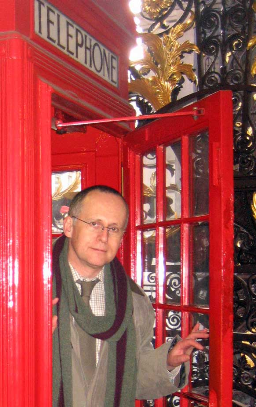 The Society (Geoscientists passim., Letters) has offered temporary accommodation to 10 employees of the Royal Academy, and we are not alone in doing so (the Society of Antiquaries has entered into a similar arrangement). But a paradox has been bothering me lately. How come The Geological Society, representing the science that supports not only the commercial success of many rich multinational companies but (let’s not be falsely modest) the whole of advanced civilisation (which depends on the energy and raw materials we find), is so much less well-endowed than the RA – which arguably represents the froth that floats on top?
The Society (Geoscientists passim., Letters) has offered temporary accommodation to 10 employees of the Royal Academy, and we are not alone in doing so (the Society of Antiquaries has entered into a similar arrangement). But a paradox has been bothering me lately. How come The Geological Society, representing the science that supports not only the commercial success of many rich multinational companies but (let’s not be falsely modest) the whole of advanced civilisation (which depends on the energy and raw materials we find), is so much less well-endowed than the RA – which arguably represents the froth that floats on top?
(Now – if you see the shade of C P Snow looming over the horizon, fear not. Science and arts are not two sides of the same coin. Snow’s pernicious ‘Two Cultures’ concept has long misled many into feeling aggrieved about science’s relative unpopularity, and Snow’s imaginary bugbear, the ‘arts-educated metropolitan élite’. This is and has always been paranoid nonsense.)
No, this is not about feeling aggrieved – it’s about understanding something fundamental about sponsorship.
There is a basic difference between arts and natural sciences. Arts exist to be attractive and popular - to communicate, to sell themselves. And they do – chiefly because what they communicate concerns that which nearly everyone cares most about – namely, ourselves. Unacademic people, who are nearly everybody, are only interested in people; and the arts are, above all, human.
Nature, however, is not obliged even to be comprehensible, let alone popular. Science is not ‘about us’. That connection can be made, but only with talent and effort – with art, in fact. Science will never be ‘popular’ to the extent that the arts are, no matter how hard we try. We can congratulate ourselves over the success of our London (formerly Shell) lectures (which no longer enjoy any sponsorship) and the 1312 people who visited on Open Day; but the annual footfall of the Royal Academy is counted in millions.
So industrial sponsorship, for the Society, is a completely different proposition from sponsorship of the RA. Sponsorship exists in two models. One model is ‘customer-contractor’ (whereby the sponsor receives services from the sponsored). The other is ‘advertising and PR’ (whereby the sponsored publicises and perhaps also whitewashes the sponsor).
The Society’s Corporate Affiliates, bless ‘em all, are of the first type, and I am certainly not complaining – this is the nature of the beast. But the really big sponsorship money only comes from the second model. Alas, patronage of the Geological Society – no matter how worthy we are - will never compete for the corporate dollar as effectively as Don Giovanni at the Royal Opera, or the Summer Exhibition.
DR TED NIELD NUJ FGS, EDITOR
[email protected], @TedNield @geoscientistmag